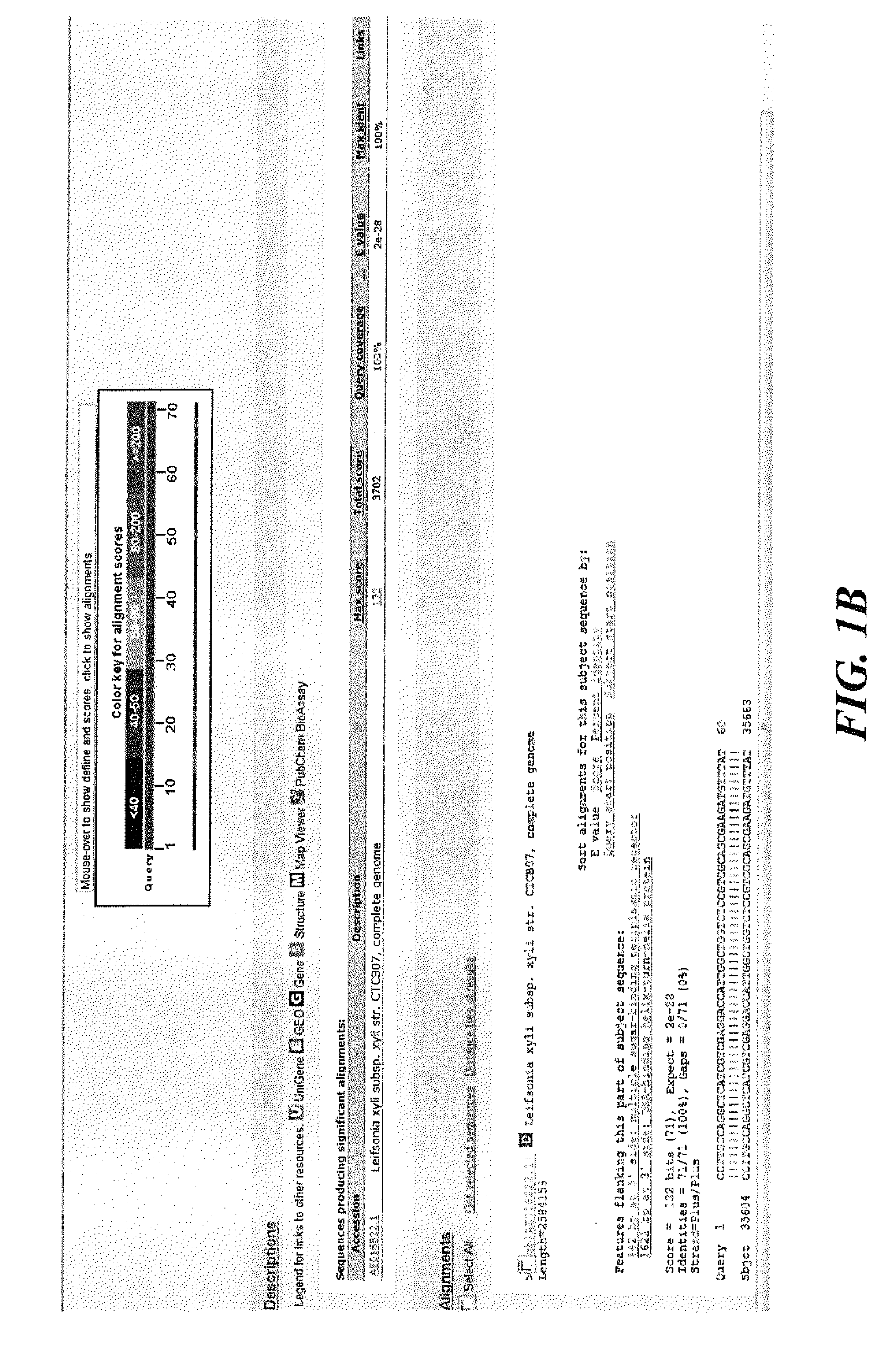Methods and kits for detection of a pathogen in sugarcane
- Summary
- Abstract
- Description
- Claims
- Application Information
AI Technical Summary
Benefits of technology
Problems solved by technology
Method used
Image
Examples
example
Material and Methods
[0074]Samples:
[0075]Sugarcane juices from Lxx infected and Lxx-free sugarcane. The sugarcane culms were cleaned with a damp cloth to avoid contamination by soil particles and other impurities. Stems were cut between two neighboring internodes. A low pressure compressor was used in extraction of the sugarcane juice. About 0.5 mL juice from each stem was collected into a 1.5 mL microcentrifuge tube.
[0076]DNA Template Preparation for TAQMAN® Assays:
[0077]compared to published methods of detection of Lxx, there is no pathogen lysis step in this method. The original sugarcane juice is diluted 5-fold in water or Tris and EDTA (TE) buffer. The sugarcane juice can be diluted from 5, 6, 7, 8, 9, or 10-fold in water or TE buffer. The DNA of the pathogen of interest will be released during the first denaturation step (about 95° C., 5 min) in a real-time PCR reaction. This method simplifies the detection process.
[0079]Two TAQMAN® assays were design...
PUM
| Property | Measurement | Unit |
|---|---|---|
| Sensitivity | aaaaa | aaaaa |
| Fluorescence | aaaaa | aaaaa |
Abstract
Description
Claims
Application Information
 Login to View More
Login to View More - R&D
- Intellectual Property
- Life Sciences
- Materials
- Tech Scout
- Unparalleled Data Quality
- Higher Quality Content
- 60% Fewer Hallucinations
Browse by: Latest US Patents, China's latest patents, Technical Efficacy Thesaurus, Application Domain, Technology Topic, Popular Technical Reports.
© 2025 PatSnap. All rights reserved.Legal|Privacy policy|Modern Slavery Act Transparency Statement|Sitemap|About US| Contact US: help@patsnap.com



